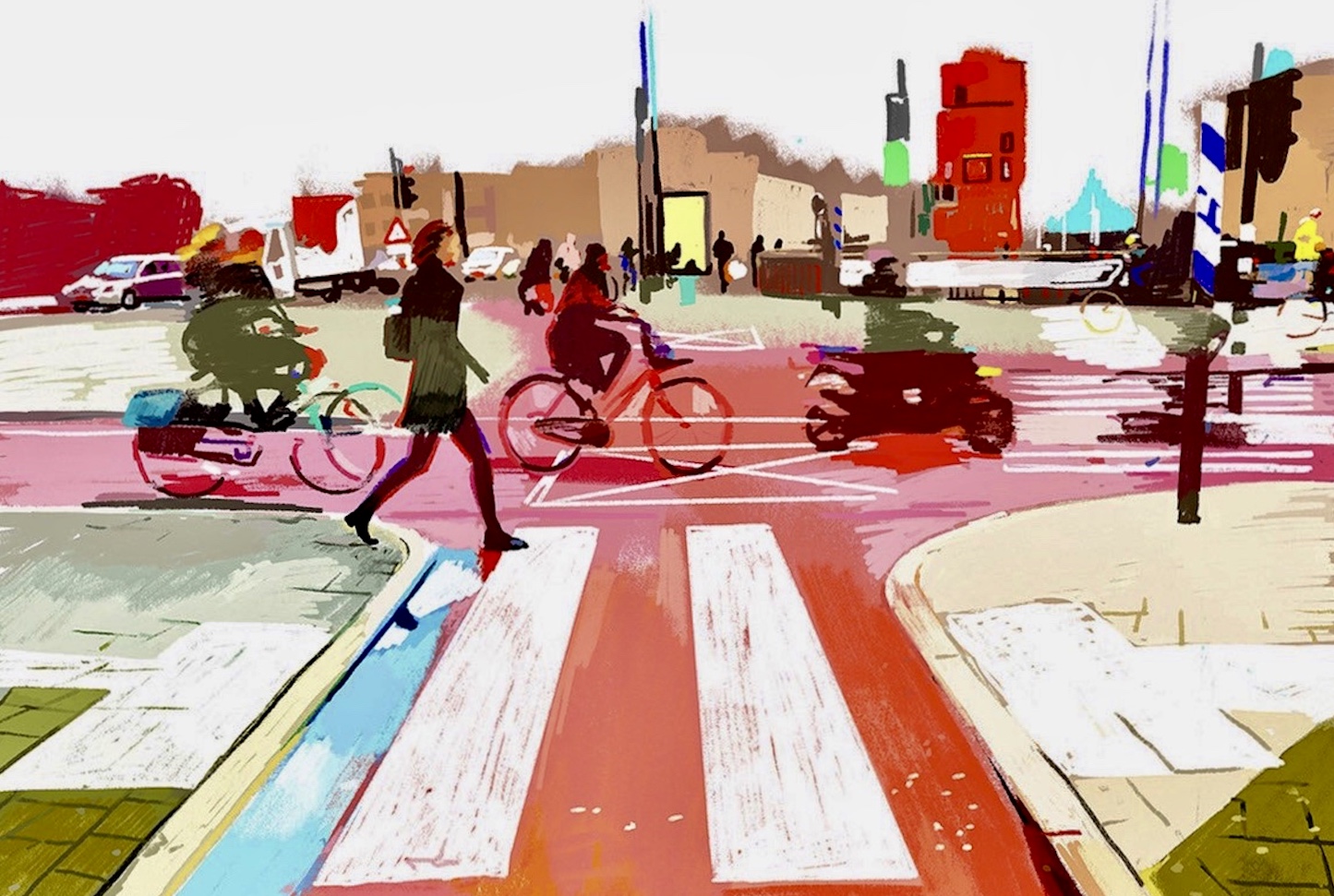

In the past couple of years, if you lived in a major, or even mid-sized city, you were likely familiar with bike-share bikes.
Whether propped against a tree, strewn along the sidewalk or standing “docked” at a station, the often brightly colored bikes with whimsical company names promised a ready means to get from Point A to Point B.
But one person’s spontaneous ride is another person’s commute to work. Prior to the COVID-19 pandemic, in cities where bike-share systems have been introduced, bike commuting increased by 20%, said Dafeng Xu, an assistant professor in the University of Washington’s Evans School of Public Policy and Governance. Xu studied U.S. cities with and without bike-share systems, using Census and company data to analyze how commuting patterns change when bike shares become available.
“This study shows that bike-share systems can drive a population to commute by bike,” said Xu, whose study was published May 11 in the Journal of Policy Analysis and Management.
Bike-share systems, common in cities in Europe and Asia, were launched in four U.S. cities in 2010 and as of 2016 had grown to more than 50. Not all systems have been successful: Convenience — how easy it is to find and rent a bike — is the key. In Seattle, for example, a city-owned bike-share program failed in 2017 due largely to a limited number of bikes and a lack of infrastructure, but private companies in the same market thrived prior to the pandemic.
[Around the world, cities have enacted mobility restrictions during the coronavirus outbreak. The responses of bike-share companies, and bike-share usage, have varied by community.]
Among other interests in transportation and immigration policy, Xu researches the effects of bicycling on the environment and human health, and on the ways bike-share systems can play a role by expanding access to cycling.
“In general, biking is good and healthy, and it means less pollution and traffic, but it can be expensive, and people worry about their bikes being stolen, things like that,” Xu said. “Bike share solves some of these problems, because people don’t need to worry about the cost and theft.”
For this study, Xu sorted through nine years of demographic and commute statistics from the American Community Survey, a detailed, annual report by the Census Bureau. He then examined bike-share company data (through the National Association of City Transportation Officials) from 38 cities with systems, focusing on trips logged during morning and afternoon rush hours. By comparing the number, location and time of work-related bike commutes from Census data against bike-share company records of trips logged, both before and after the launch of bike shares, Xu was able to estimate the use of bike shares for commute trips.
Xu found that in both bike-share and non-bike-share cities, the rate of bike commuting increased, while car commuting decreased, from 2008-2016. However, the rate of bike commuting — and the use of public transportation — was significantly greater in bike-share cities.
For example, in bike-share cities in 2008, roughly 66% of commuters drove to work, about 1% biked, and 22% took transit. That compared to non-bike-share cities, where about 88% of commuters drove, fewer than 1% biked, and 4% took transit.
By 2016 — after many bike-share systems had launched — car commuting had fallen to 59% in bike-share cities, while bike commuting had climbed to 1.7% and transit to 26%. Commuting by car in non-bike-share cities had slipped to 83% in 2016, while bike commuting had grown to 1%, and transit to 6%.
Nationwide, 0.6% of commuters bike to work, according to an American Community Survey report in 2017.
In general, cities with larger bike-share systems also experienced sharper increases in bicycle commuting, Xu said.
“This is not surprising: A large bike-share system means a higher density of public bicycles and is thus more accessible by commuters,” he said. “In contrast, sadly, Seattle’s Pronto struggled to attract commuters and was finally doomed only after three years of operation partially due to its relatively small size.”
In his paper, Xu points to Chicago, which operates a municipally owned bike-share system called Divvy. Prior to Divvy’s launch in 2013, 1.5% of commuters biked to work, Xu said, but afterward, that rate grew to 2%.
The trends held, he said, even when controlling for a city’s expansion of protected bike lanes — another significant factor in whether people choose to bike to work, according to other research.
Overall, the numbers before COVID-19 were promising, Xu said. The numbers could grow, he said, if communities and bike-share companies make changes that can boost the appeal of bike commuting: adding bike lanes to city streets, expanding programs to outlying communities, or increasing the allowable rental time. Many bike shares, for instance, last only up to a half-hour before a user has to pay for a new trip.
Xu is also the author of a previous paper analyzed the impact of bike-share systems on obesity rates.



